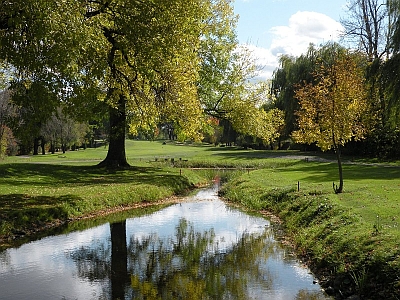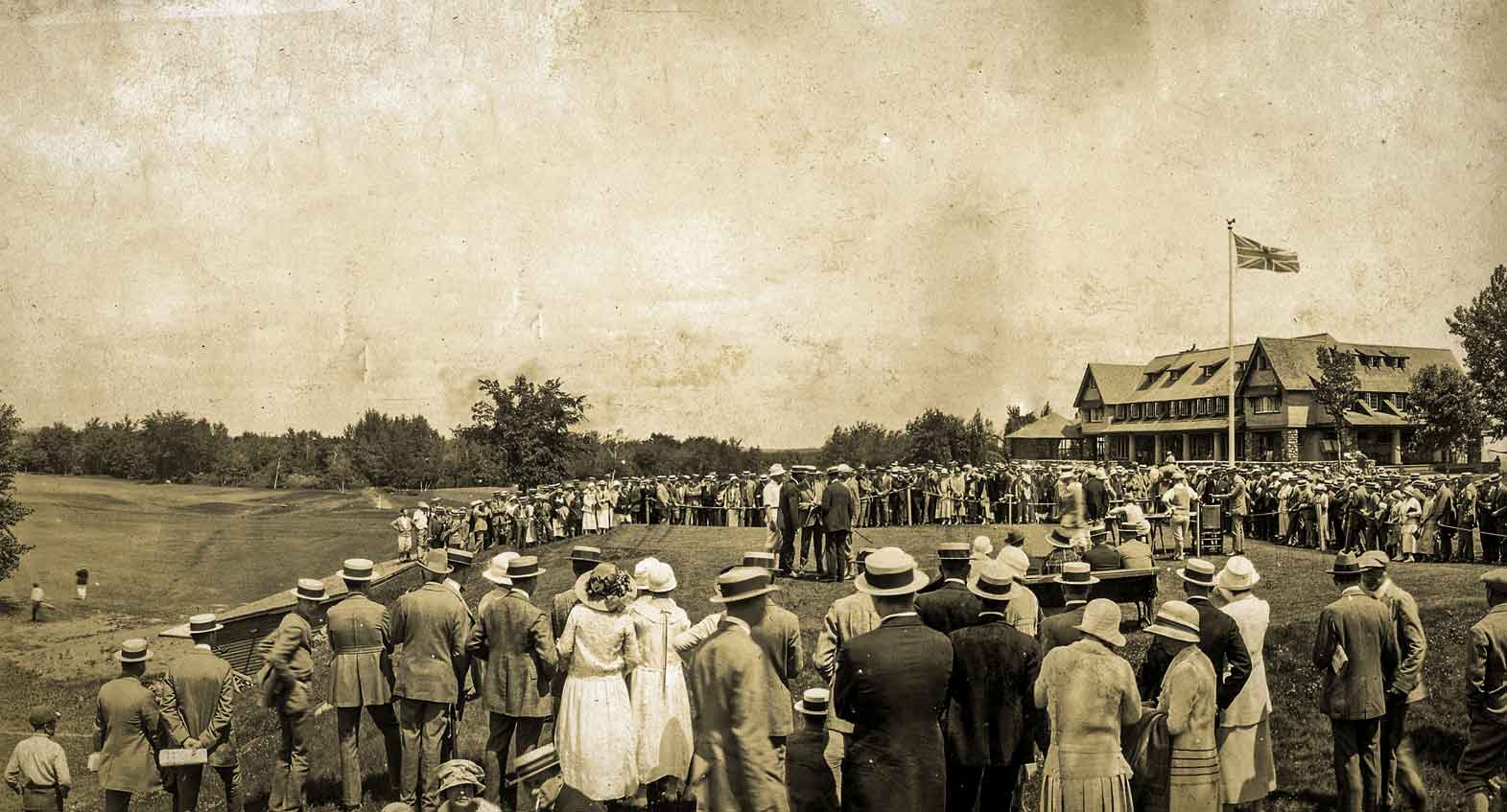
Work on the property commenced in 1910 when numerous ditches were dug extending well beyond the Club’s boundaries. The property was completely fenced off, and the task of blasting boulders and clearing the land began. Many years previously, when the railway bridge across the St. Lawrence was built, much of the fill for the right of way embankment had been taken from the area which is now in front of the clubhouse. This accounts in part for the land feature extending from the 12th green to the 4th tee, and sweeping in a curve to the 4th green. The bowl of the 9th green was a large hole into which many tons of rock and fill were dumped to bring the bottom up to a suitable level.
The road along the west of the property is of interest as it was the old right of way of the first steam railway to connect Canada with the United States, and ran from the wharf at Kahnawake to Moers Junction, N.Y.
Fieldwork progressed throughout 1911 and 1912 based on a plan drawn up by Charles Murray, professional at Royal Montreal, and his brother Albert. It was not, however, until the late summer of 1913 that the course was opened for play when fifteen holes had been completed. By 1914 all eighteen holes were ready, although shortly thereafter the holes were lengthened as more and more ground was prepared.
The many fine trees – today so much admired – are the result of a carefully planned programme initiated at the time the course was built and followed up through the years. It is interesting to examine old photographs of the course in which the younger versions of today’s stately maples and elms can readily be identified marking certain areas on the course. Off the fairway dense undergrowth in swampy ground was generally to be found, and the task of clearing and draining the rough continues to this day


 Work on the property commenced in 1910 when numerous ditches were dug extending well beyond the Club’s boundaries. The property was completely fenced off, and the task of blasting boulders and clearing the land began. Many years previously, when the railway bridge across the St. Lawrence was built, much of the fill for the right of way embankment had been taken from the area which is now in front of the clubhouse. This accounts in part for the land feature extending from the 12th green to the 4th tee, and sweeping in a curve to the 4th green. The bowl of the 9th green was a large hole into which many tons of rock and fill were dumped to bring the bottom up to a suitable level.
Work on the property commenced in 1910 when numerous ditches were dug extending well beyond the Club’s boundaries. The property was completely fenced off, and the task of blasting boulders and clearing the land began. Many years previously, when the railway bridge across the St. Lawrence was built, much of the fill for the right of way embankment had been taken from the area which is now in front of the clubhouse. This accounts in part for the land feature extending from the 12th green to the 4th tee, and sweeping in a curve to the 4th green. The bowl of the 9th green was a large hole into which many tons of rock and fill were dumped to bring the bottom up to a suitable level.